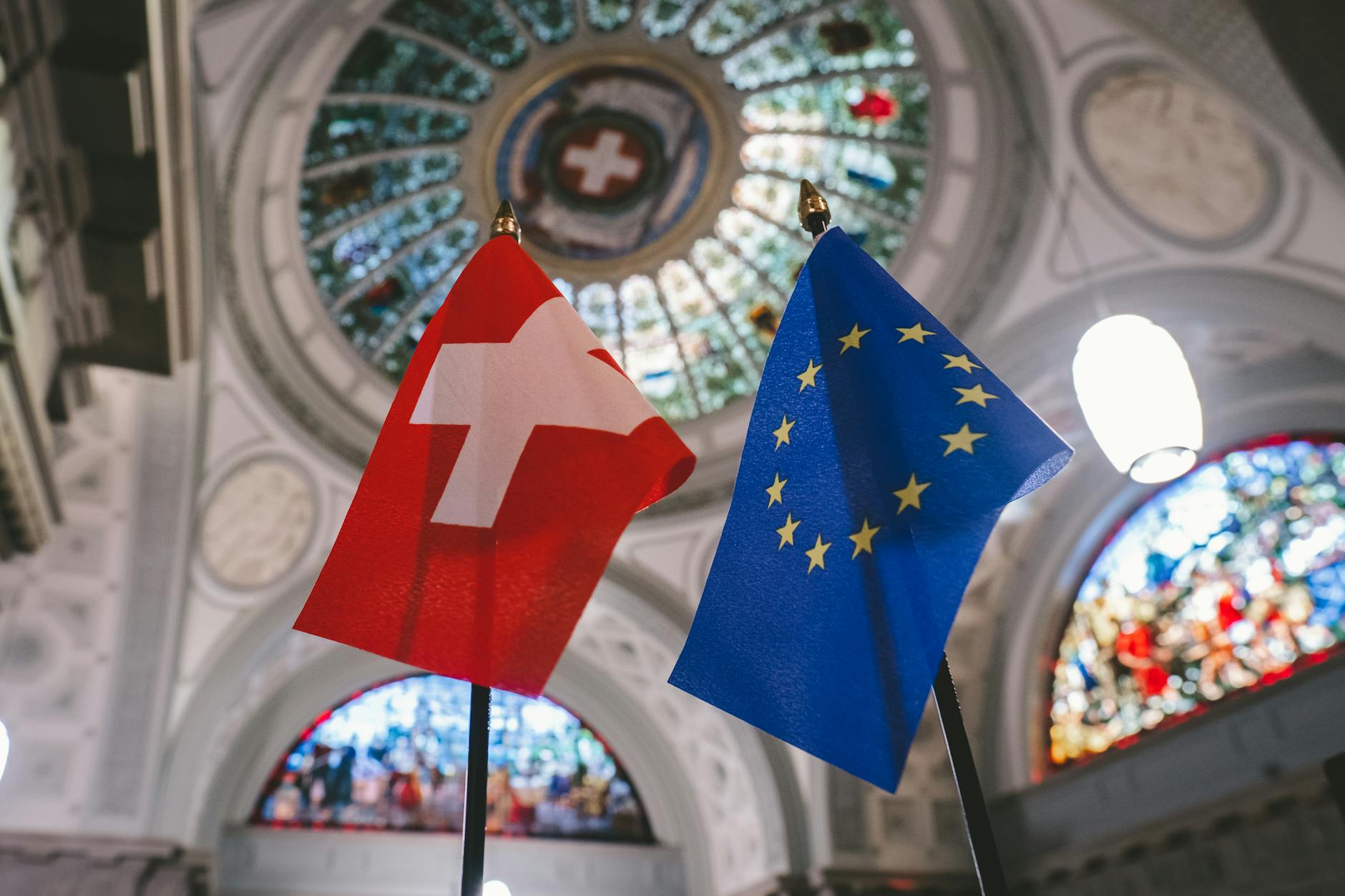A Fragile Truce: Navigating the Shifting Sands of U.S.-China Economic Relations
Beneath the Surface of Trade Peace, Underlying Tensions Persist
The recent extension of the trade truce between the United States and China has brought a welcome period of calm to the often-turbulent waters of their economic relationship. This diplomatic breathing room, while appreciated by markets and businesses alike, is a temporary respite rather than a fundamental resolution. The underlying complexities and competing interests that have defined the U.S.-China dynamic for years continue to simmer, suggesting that the current period of “playing nice” may be more a strategic pause than a lasting détente. Understanding the nuances of this ongoing negotiation requires a deep dive into the historical context, the immediate drivers of this détente, and the potential ramifications for the global economic order.
Context & Background: A Decade of Escalating Tensions
The economic relationship between the United States and China has been characterized by a complex interplay of interdependence and rivalry for decades. For much of the late 20th and early 21st centuries, China’s integration into the global economy, spurred by its entry into the World Trade Organization (WTO) in 2001, was viewed by many in the U.S. as an opportunity for mutual prosperity. The promise was that economic engagement would foster political liberalization in China and create a more level playing field for American businesses.
However, as China’s economic power grew, so did concerns within the United States regarding trade imbalances, intellectual property theft, currency manipulation, and state-sponsored industrial policies that were perceived to disadvantage foreign competitors. These grievances culminated in the significant escalation of trade tensions during the Trump administration, which initiated a series of tariffs on Chinese goods, prompting retaliatory measures from Beijing. This tit-for-tat tariff exchange, which began in 2018, created considerable uncertainty for global supply chains and international commerce.
The core of the U.S. grievance often centered on what it viewed as unfair trade practices that allowed China to gain a competitive edge. These included allegations of forced technology transfer, where U.S. companies operating in China were often pressured to share their proprietary technologies in exchange for market access. Furthermore, concerns were raised about the role of state-owned enterprises in China, which were seen as receiving preferential treatment and subsidies, distorting market competition. The sheer scale of the U.S. trade deficit with China also became a focal point of political discourse.
China, on its part, has consistently defended its economic policies, arguing that they are necessary for its own development and that it operates within the framework of international trade norms. Beijing has often pointed to the historical context of its economic rise, emphasizing that its industrial policies are aimed at fostering domestic innovation and competitiveness, a common practice among many developing nations. The Chinese government has also expressed frustration with what it perceives as protectionist measures from the U.S. that undermine fair competition and hinder global trade liberalization.
The trade war, while not fully resolved, saw periods of negotiation and the signing of the “Phase One” trade deal in January 2020. This agreement aimed to address some of the U.S. concerns, including increased purchases of U.S. goods and agricultural products by China and commitments to intellectual property protection. However, the implementation of this deal faced challenges, and many of the structural issues underlying the trade dispute remained unresolved.
The Biden administration, while maintaining a generally tougher stance on China compared to previous administrations, has sought to recalibrate the U.S. approach, emphasizing strategic competition rather than outright confrontation. The administration has also focused on working with allies to present a united front on issues related to China’s trade practices. Despite this shift in rhetoric and approach, the fundamental economic challenges and strategic divergences between the two global powers have persisted, leading to the current, albeit fragile, period of relative calm.
In-Depth Analysis: The Drivers of the Current “Peace”
The current period of détente in U.S.-China economic relations is not the result of a sudden epiphany or a complete resolution of underlying disputes. Instead, it appears to be driven by a confluence of pragmatic considerations on both sides, as well as a recognition of the broader global economic landscape.
Domestic Economic Imperatives: Both the U.S. and China are currently grappling with significant domestic economic challenges. In the United States, concerns about inflation, supply chain resilience, and the potential for a recession have led policymakers to prioritize economic stability. The persistent uncertainty generated by trade disputes can deter investment and hinder economic growth. By easing trade tensions, the U.S. administration may be seeking to create a more predictable environment for businesses, encouraging investment and bolstering domestic economic recovery. The Biden-Harris Administration’s focus on strengthening domestic supply chains and bolstering manufacturing, while critical of China, also acknowledges the need for stable international trade relationships for sourcing necessary materials and components.
Similarly, China is facing its own set of economic headwinds. The post-pandemic recovery has been slower than anticipated, with challenges in sectors like real estate and consumer spending. Furthermore, China’s leadership under Xi Jinping has emphasized “common prosperity” and self-reliance, but these goals are intertwined with the need for continued integration into the global economy to access markets and technology. A protracted trade war could further isolate China and hinder its economic modernization efforts. Therefore, a temporary de-escalation of trade tensions allows Beijing to focus on its internal economic agenda without the added pressure of constant trade friction.
Global Economic Stability and Shared Challenges: The global economy is facing a multitude of interconnected challenges, including the ongoing impact of the COVID-19 pandemic, the war in Ukraine and its ripple effects on energy and food security, and the looming threat of climate change. In this context, the U.S. and China, as the world’s two largest economies, have a significant, albeit often unacknowledged, stake in maintaining global economic stability. Unnecessary trade wars can exacerbate existing global economic fragilities, leading to increased inflation, disrupted trade flows, and slower growth worldwide. This shared interest in global stability, even amidst competition, can act as a moderating force on bilateral economic relations.
Strategic Reassessment and Alliance Building: The U.S. administration has been actively engaged in strengthening alliances and partnerships in Asia and beyond. This strategic approach recognizes that addressing the complexities of China’s economic practices is more effectively done through coordinated action rather than unilateral measures. By fostering a more stable economic relationship with China, the U.S. may be seeking to create space to focus on other strategic priorities, such as bolstering alliances and developing frameworks for addressing shared global challenges. For instance, the U.S. Department of State’s emphasis on strengthening alliances in the East Asia and Pacific region underscores this broader strategic thinking, which can be facilitated by a less volatile economic relationship with China.
The Role of Specific Sectors: While the broader trade narrative often focuses on tariffs and macroeconomic imbalances, specific sectors also play a role. For example, American agricultural producers, who suffered significant losses due to retaliatory tariffs, have a vested interest in normalized trade relations with China, a major buyer of U.S. agricultural products. Similarly, American technology companies, while facing scrutiny over intellectual property, also rely on the vast Chinese market for their products. These sectoral interests can exert influence on policymaking, encouraging a more balanced approach.
The “Playing Nice” as a Tactical Maneuver: It is crucial to view the current “playing nice” not as a sign of capitulation or a fundamental shift in long-term strategy, but rather as a tactical adjustment. Both sides understand that a complete decoupling of their economies is neither feasible nor desirable in the short to medium term. The deep integration of supply chains, the sheer volume of bilateral trade, and the interconnectedness of global financial markets mean that a complete rupture would have catastrophic consequences for all parties. Therefore, the current calm can be seen as an opportunity to manage the relationship more pragmatically, focusing on areas of cooperation where possible, while continuing to compete and address areas of concern through more targeted and less disruptive means.
Pros and Cons of the Current Trade Truce
The current period of reduced trade friction between the United States and China presents a mixed bag of advantages and disadvantages, impacting various stakeholders differently.
Pros:
- Reduced Economic Uncertainty: For businesses operating in or with China, the de-escalation of trade disputes significantly reduces uncertainty. This can lead to increased investment, more stable supply chains, and more predictable pricing, benefiting both American and Chinese enterprises.
- Lower Consumer Prices: Tariffs often translate into higher costs for imported goods, which can be passed on to consumers. A truce that removes or suspends tariffs can lead to lower prices for a range of products, offering relief to households in both countries and globally.
- Enhanced Global Economic Stability: As the two largest economies, the U.S. and China have a disproportionate impact on global economic stability. A period of reduced trade tensions contributes to a more stable global environment, benefiting all nations by fostering predictable trade flows and investment.
- Opportunities for Cooperation on Global Issues: When trade relations are less confrontational, it can create more space for cooperation on pressing global challenges, such as climate change, pandemic preparedness, and nuclear non-proliferation. This is particularly important given the scale of these challenges and the leadership roles both nations play.
- Support for Specific Sectors: Industries heavily reliant on trade with China, such as American agriculture and certain technology sectors, can benefit from the normalization of trade relations, allowing for renewed market access and sales.
Cons:
- Failure to Address Structural Issues: The truce, by its nature, is a temporary measure. It does not fundamentally resolve the long-standing structural issues that have fueled trade tensions, such as allegations of intellectual property theft, state subsidies, and market access barriers. These issues could re-emerge and lead to renewed friction.
- Potential for Strategic Complacency: A period of calm might lead to a relaxation of efforts to address China’s non-market practices, potentially allowing Beijing to continue or even expand policies that disadvantage foreign competitors. This could be seen as a missed opportunity by those advocating for a stronger stance.
- Continued Geopolitical Competition: While economic tensions may be temporarily eased, the broader geopolitical competition between the U.S. and China remains intense. Economic “peace” in one area does not necessarily translate to reduced tensions in other spheres, such as technology competition, security, or influence in international organizations.
- Vulnerability of Supply Chains: Despite efforts to diversify, many global supply chains remain heavily reliant on China. A temporary truce does not address the underlying strategic vulnerabilities exposed during the peak of trade tensions, leaving economies susceptible to future disruptions if relations sour again.
- “Managed” Competition vs. True Level Playing Field: The current approach may represent a strategy of “managed” competition, where the goal is to keep competition within certain bounds rather than to achieve a truly level playing field. This could leave certain U.S. industries at a disadvantage in the long run.
Key Takeaways
- The extension of the U.S.-China trade truce is a temporary de-escalation, not a resolution of fundamental economic disputes.
- Domestic economic pressures in both the U.S. and China, coupled with a desire for global economic stability, are key drivers of the current calm.
- The truce offers benefits such as reduced economic uncertainty, lower consumer prices, and potential for global cooperation, but it fails to address underlying structural issues and could lead to strategic complacency.
- The long-term trajectory of U.S.-China economic relations remains one of managed competition, with ongoing strategic rivalry across various domains.
- Specific sectors, like American agriculture, have a vested interest in sustained trade relations with China.
Future Outlook: A Dynamic Equilibrium
The future of U.S.-China economic relations is unlikely to be one of permanent harmony or outright confrontation. Instead, it is more likely to settle into a period of dynamic equilibrium characterized by managed competition. This means that both countries will continue to pursue their national interests, which will inevitably lead to points of friction, but they will also seek to avoid the destabilizing effects of a full-blown trade war.
Several factors will shape this future outlook:
- Technological Competition: The race for technological supremacy, particularly in areas like artificial intelligence, semiconductors, and advanced manufacturing, will remain a central theme. U.S. efforts to restrict China’s access to advanced technologies, such as advanced chips, are likely to continue, prompting retaliatory measures from Beijing and spurring China’s efforts towards greater self-sufficiency. The Commerce Department’s actions on export controls demonstrate the ongoing strategic importance of technology in this bilateral relationship.
- Supply Chain Diversification and Resilience: The vulnerabilities exposed by past trade disputes and the pandemic have accelerated efforts by both countries and their allies to diversify supply chains. This “de-risking” strategy, rather than complete decoupling, aims to reduce over-reliance on any single country, potentially leading to shifts in global manufacturing and trade patterns. The focus on supply chain resilience by the U.S. Chamber of Commerce highlights this ongoing trend.
- Geopolitical Alignments: The evolving geopolitical landscape, including the relationships between the U.S. and its allies in the Indo-Pacific, and China’s relationships with other global powers, will significantly influence economic interactions. For instance, the U.S. Department of State’s engagement with various countries and regions shapes the broader context within which economic negotiations take place.
- Domestic Political Cycles: Economic policies in both countries are influenced by domestic political considerations. Elections, shifts in public opinion, and the priorities of different administrations will all play a role in shaping the trajectory of bilateral economic relations.
- International Norms and Institutions: The role of international institutions like the WTO will continue to be debated. While the U.S. and China may seek to manage their relationship bilaterally, the effectiveness of multilateral frameworks in governing global trade will remain a critical factor.
Ultimately, the relationship will likely be characterized by a delicate balancing act, where periods of relative cooperation are interspersed with moments of heightened competition and tension. The ability of both nations to manage these cycles effectively will be crucial for global economic stability and prosperity.
Call to Action
Navigating the complexities of the U.S.-China economic relationship requires informed engagement from businesses, policymakers, and citizens alike. For businesses, it means continuing to diversify supply chains, build resilience, and stay abreast of evolving trade policies and regulations. Understanding the strategic motivations behind the “truce” and anticipating future shifts is paramount for long-term success.
Policymakers must continue to pursue strategies that promote fair competition, protect national security interests, and foster economic growth, while also recognizing the importance of cooperation on shared global challenges. This necessitates a nuanced approach that avoids generalizations and recognizes the multifaceted nature of the U.S.-China relationship. The Office of the United States Trade Representative’s ongoing work in monitoring and addressing China’s trade practices is a vital component of this effort.
For the public, a critical understanding of the economic dynamics at play is essential. This involves looking beyond sensational headlines and appreciating the intricate interplay of national interests, global economics, and geopolitical realities that shape the relationship between these two global powers. Staying informed through credible sources and engaging in thoughtful dialogue are key to fostering a more stable and prosperous global future.









